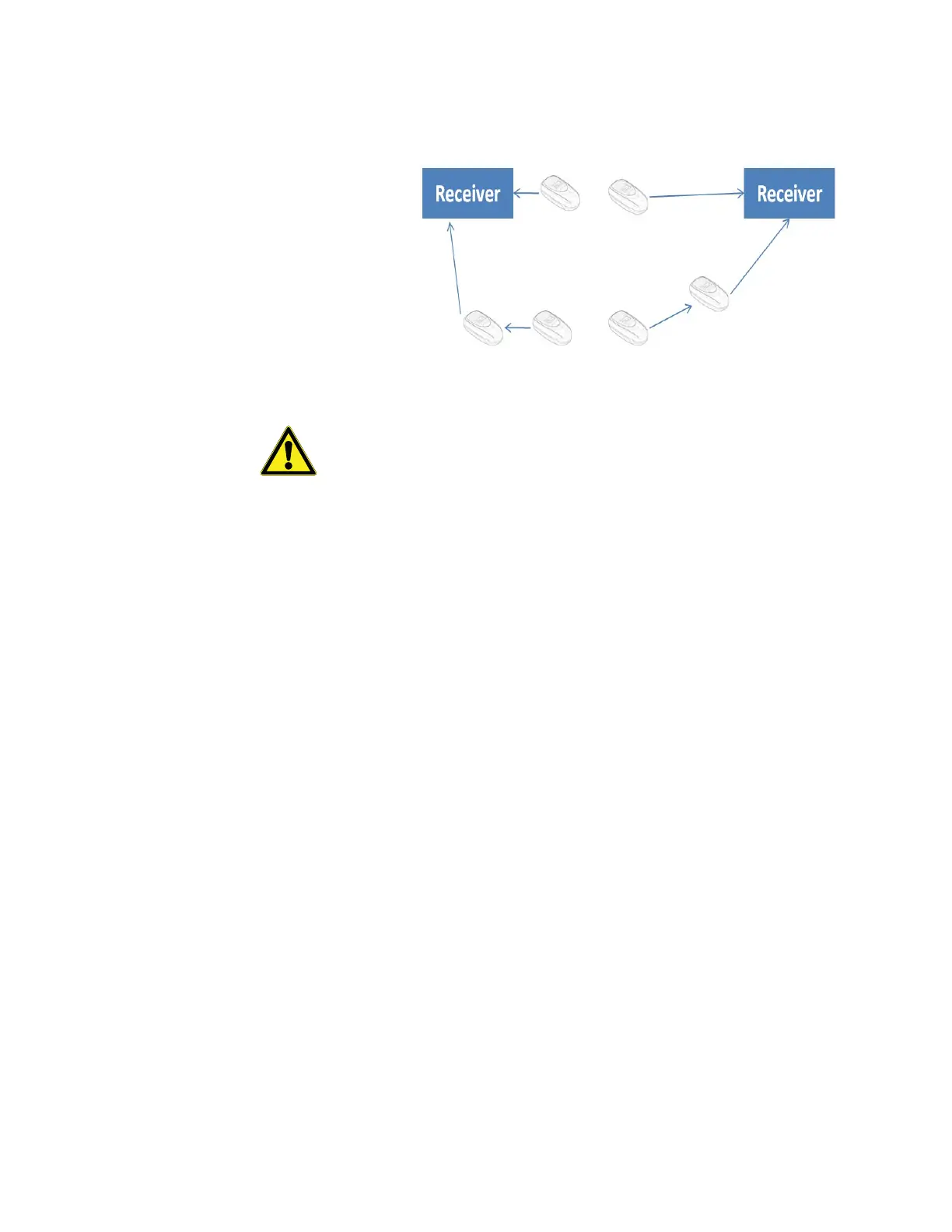Preventive Maintenance Guidelines
Thermo Scientific Smart-Vue
®
Wireless Monitoring Solution Administrator Guide v 2.2 119
Another option is to add another receiver (depending on the real number of
end-points in your network).
Figure 65. Networks may also be optimized by adding receivers
CAUTION: It is ESSENTIAL to avoid creating wireless “overlapping”
zones when adding receivers. That is, no two receivers should have wireless
coverage that includes the same modules, which causes isolated and random
drops in wireless communication and may lead to a notable increase in
technical alarms.
If you need more information on this topic, please contact someone
qualified to evaluate the technical impact of adding receivers.
22.1.2 Module Wireless
Communications
Wireless system range is generally specified as a line-of-sight measurement,
that is, without physical obstacles. Smart-Vue modules offer a line-of-sight
range that can reach up to 700 meters (2300 ft). This range can be extended
by using repeaters, including using the modules themselves as repeaters
(native feature in all Smart-Vue modules). In a closed environment
(i.e. inside a laboratory), this range generally varies from 25 to 100 meters
(82 –to 330 ft) without a repeater, and 100 to 400 meters (330 to 1300 ft)
using up to three repeaters. Variations in wireless range are due to mostly to
obstacles in the environment.
In order to set up the wireless paths in your monitoring system, it is useful
to keep in mind some of the basics of Hertzian radio wave propagation,
particularly when setting up repeaters to achieve optimal range. In
real-world environments, signals are attenuated by absorption, reflection,
refraction, and diffraction.
When a radio wave encounters an obstacle, part of its energy is absorbed,
while part continues to propagate in an attenuated manner. Part may also be
reflected. Signal attenuation during transmission is referred to as power loss.
Attenuation increases with distance. In addition, when radio waves collide
